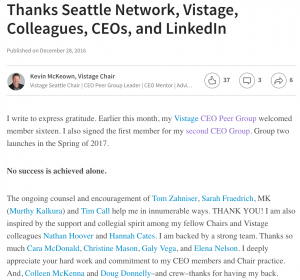 Understanding the best way to differentiate against your competition is critical to being an effective salesperson. The “Do Nothing” competitor is always one of the toughest. Who has instant access to the decision maker? Who is always part of the sales opportunity whether you are or not? The dreaded “Do Nothing.”
Understanding the best way to differentiate against your competition is critical to being an effective salesperson. The “Do Nothing” competitor is always one of the toughest. Who has instant access to the decision maker? Who is always part of the sales opportunity whether you are or not? The dreaded “Do Nothing.”
“Do Nothing” is always part of the equation because it is often the easier solution for those who are part of the decision process.
“Do Nothing” loves to remind people that there’s always something more important to worry about within the organization.
Your buyer may agree that he/she indeed has a problem, but it’s not as pressing as the dozen other problems that need solutions. There’s always bigger fish to fry.
That’s why salespeople lose to “Do Nothing.” The pain isn’t big enough or the benefits they can expect from some the solution of a business issue aren’t compelling enough to take action. The problem doesn’t warrant the time and money needed to solve it.
Your Action Plan
It can be difficult for some sellers to conceptualize how to differentiate their solution against, well, nothing. You differentiate from “Do Nothing” by basic value-based selling. Help your customer understand the pain.
- Attach your solution to the biggest business problem.
- Define the Positive Business Outcomes that drive the most impact.
- Compel your buyer to take action rather than settling for the status quo.
Think about any large deal that has stalled in your organization. Ask yourself these two questions:
- How Big is the Problem?
- Who Owns It?
If you can’t answer these questions, it is likely that you are losing the opportunity to “Do Nothing” or you are getting hammered by the customer on the price of your solution. Drill down on the problem and the impact it’s having on the business. How does your solution compare to the size of the problem? It’s likely a well-known number within the organization. Uncover it. Then map that number to the Positive Business Outcomes the organization can expect from implementing your solution. Differentiating against “Do Nothing” means you have to work harder at helping your customer understand the business pain and demonstrate how solving that pain is more important than their other initiatives.
Remember, “Do Nothing” is akin to the definition of insanity – doing something repeatedly and expecting different results. Focus on the business results that your solution can achieve and tie those results to the impact of the current problem. Without a quantifiable problem and measurable impact, “Do Nothing” wins every time.
Business & Finance Articles on Business 2 Community
(147)
Report Post



